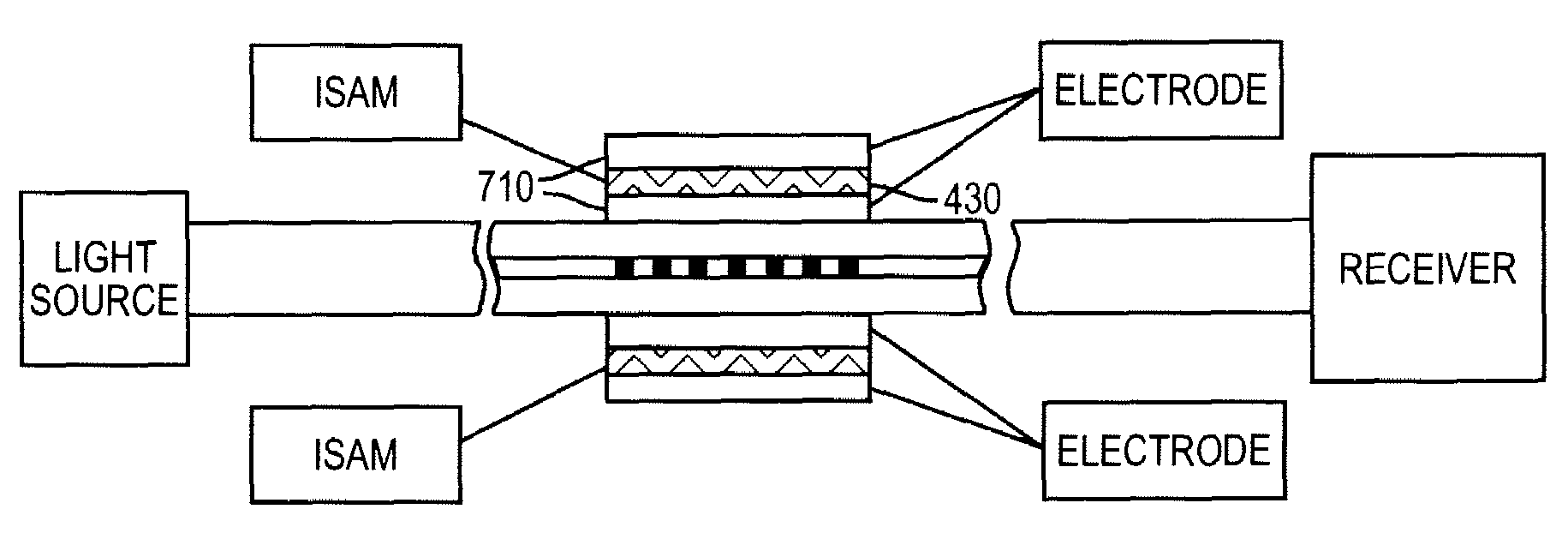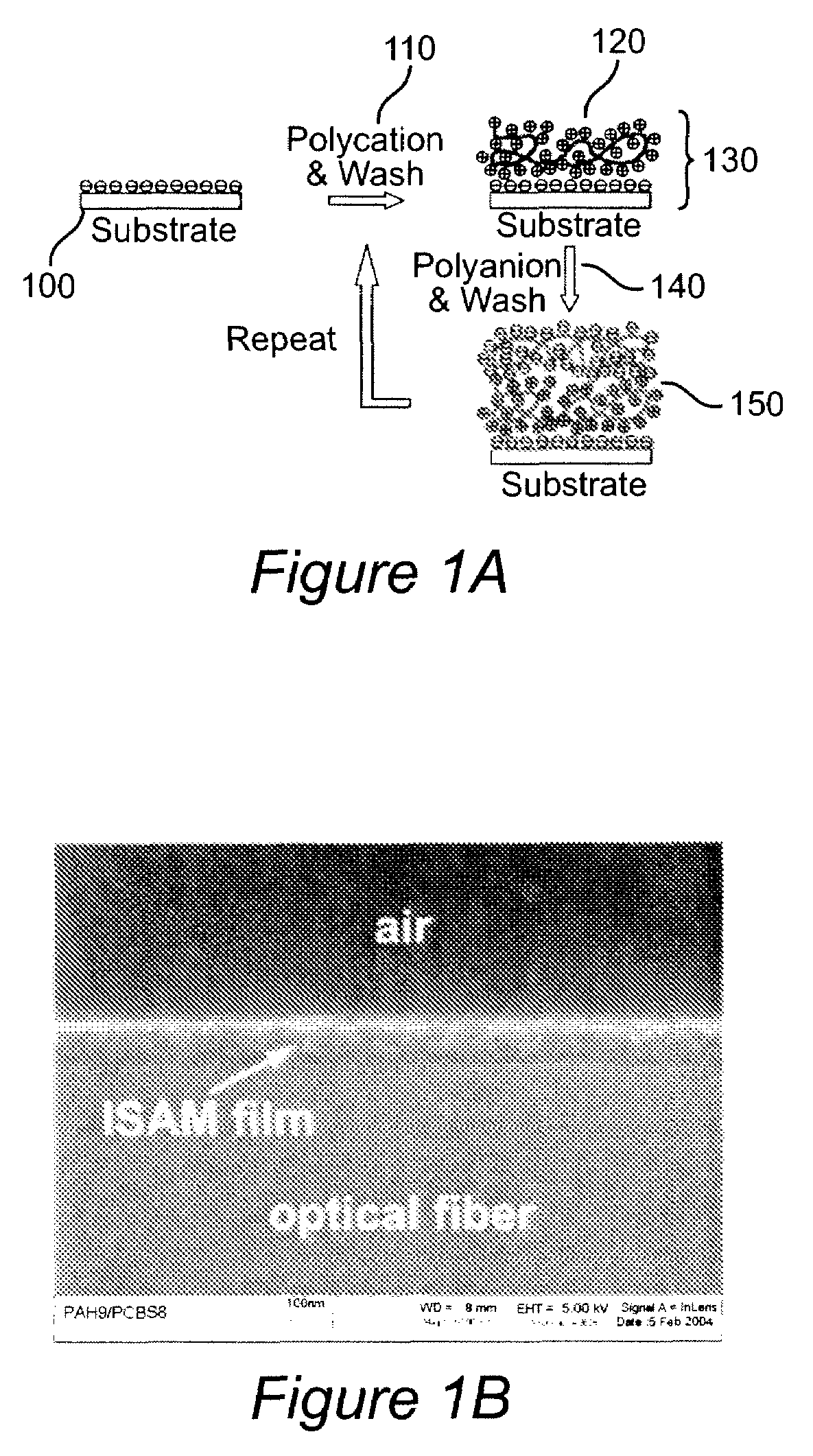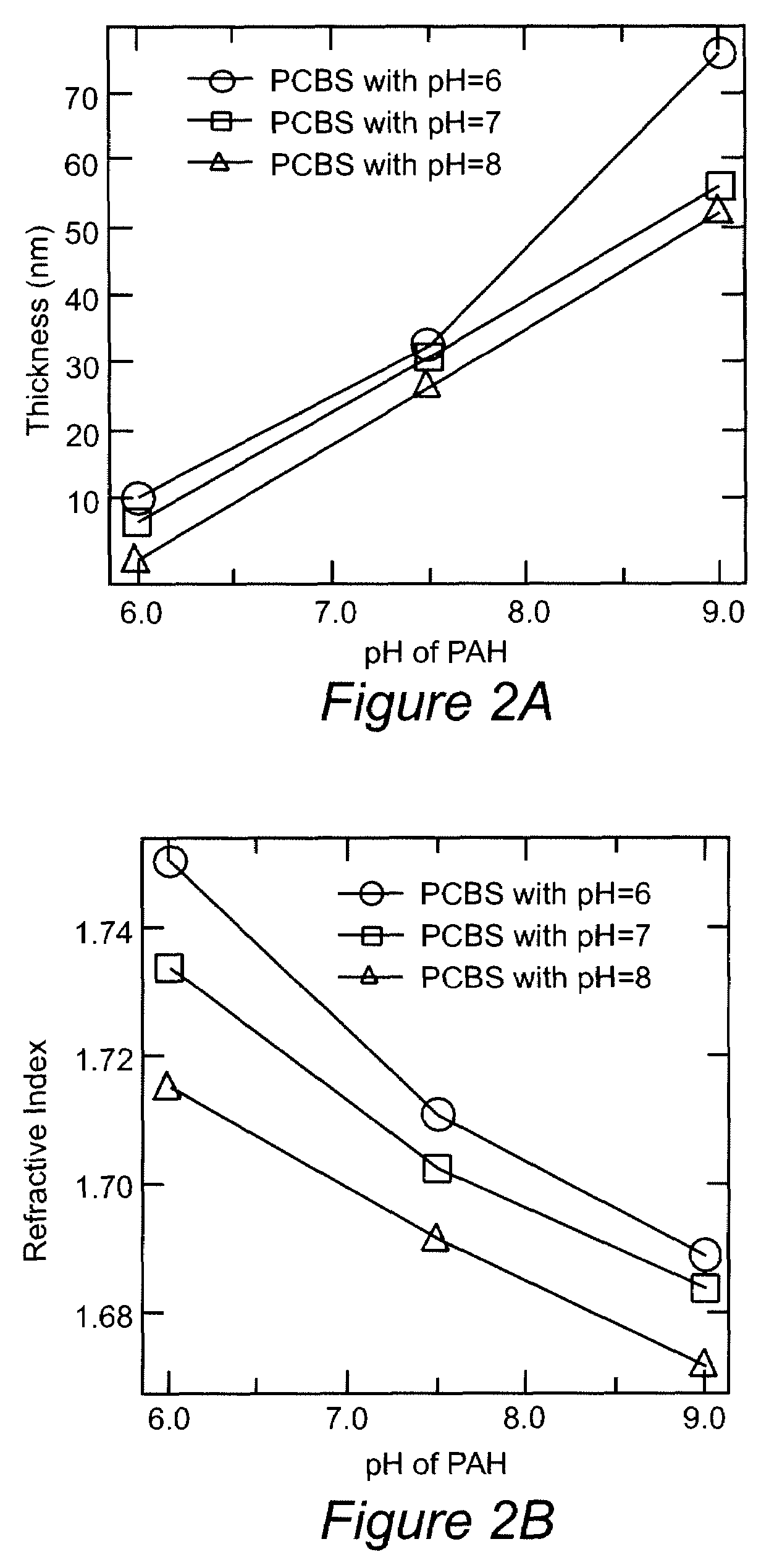Fiber-optic sensor or modulator using tuning of long period gratings with self-assembled layers
a technology of fiber optic sensors and light modulators, applied in the direction of optics, optical elements, instruments, etc., can solve the problems of non-trivial reproducible fabrication of such lpgs, inability to use, and inability to meet the practical construction of devices, etc., to achieve repeatability, high selective tuning, simple and economical
- Summary
- Abstract
- Description
- Claims
- Application Information
AI Technical Summary
Benefits of technology
Problems solved by technology
Method used
Image
Examples
Embodiment Construction
[0030]Referring now to the drawings, and more particularly to FIG. 1a, the preferred and generalized method of applying an ionic self-assembled multi-layer (ISAM) film (also referred to as a layer-by-layer (LBL) film) to a fiber optic LPG is illustrated. It should be understood that this generalized method provides a basic technique for providing tuning of fiber optic LPGs. Variations thereof and additional perfecting features supporting the function of such a structure as a chemical sensor or bio-sensor and as a modulator for fiber optic communication systems will be discussed below. However, the discussion of FIGS. 1a and 1b and the experimental results illustrated in FIG. 2 and FIGS. 3a and 3b will provide an understanding of the basic structure of and employed by the invention and its basic principles sufficient to enable its successful construction and use.
[0031]The inventors are the first to have achieved deposition of ISAM films of nm-thicknesses that are deposited on LPGs an...
PUM
 Login to View More
Login to View More Abstract
Description
Claims
Application Information
 Login to View More
Login to View More - R&D
- Intellectual Property
- Life Sciences
- Materials
- Tech Scout
- Unparalleled Data Quality
- Higher Quality Content
- 60% Fewer Hallucinations
Browse by: Latest US Patents, China's latest patents, Technical Efficacy Thesaurus, Application Domain, Technology Topic, Popular Technical Reports.
© 2025 PatSnap. All rights reserved.Legal|Privacy policy|Modern Slavery Act Transparency Statement|Sitemap|About US| Contact US: help@patsnap.com



